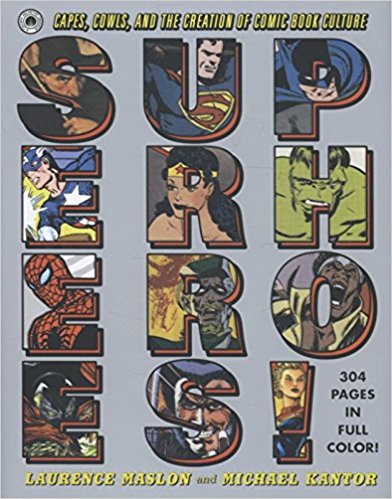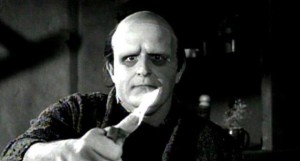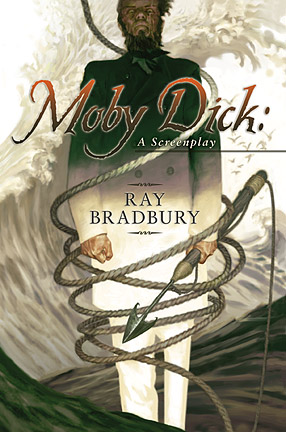(1) RABID DRAGONS. Vox Day has posted his picks for “Dragon Awards 2017”. Castalia House and John C. Wright are well represented, along with other things he likes. But poor Declan Finn — he’s not on the list.
(2) BOOZY BARBARIANS. Fritz Hahn, in a Washington Post piece called “A ‘Game of Thrones’ pop-up bar where you can drink Dothraquiris on the Iron Throne”, reviews the Game of Thrones Pop-Up Bar, which will be open throughout the summer and where you can drink The North Remembers from a horn as well as all the Ommegang Game of Thrones beers. But don’t take any broadswords there or the bouncers will confiscate them!
After pop-up bars dedicated to Christmas, “Stranger Things,” cherry blossoms and Super Mario, the Drink Company team is turning the former Mockingbird Hill, Southern Efficiency and Eat the Rich spaces into five settings evoking George R.R. Martin’s novels. (Doors open June 21, just a few weeks before Season 7 premieres on HBO.) Immersive rooms include the House of Black and White (where you’ll find a Wall of Faces made of molds of employees and friends of the bar) and the Red Keep, where you can pose for a photo as House Bolton’s flayed man. There will be dragons and house banners, of course, though the real centerpiece will most likely be a full-size replica of the Iron Throne, which co-founder Derek Brown says “is going to be totally ridiculous.”
(3) OCTAVIA BUTLER SET TO MUSIC. A theatrical concert based on Octavia E. Butler’s Parable of the Sower is coming to Chapel Hill, NC in November.
Singer-songwriter-guitarist Toshi Reagon is a celebration of all that’s progressive and uplifting in American music. Written by Toshi in collaboration with her mother — iconic singer, scholar and activist Bernice Johnson Reagon — this powerful theatrical concert brings together 200 years of African American song traditions to give life to Octavia E. Butler’s acclaimed science fiction novel, with revealing insights on gender, race and the future of human civilization.
(4) SPECIAL NASFIC OBSERVATORY TRIP. NorthAmeriCon ‘17 members have a chance to join guest of honor Brother Guy Consolmagno, the “Pope’s Astronomer,” on a special tour of the Arecibo Observatory. Find out how at the link.
There are 25 spaces available for the VIP tour, which includes the visitor’s center as well as a 30-minute behind-the-scenes tour in small groups. Since we anticipate that demand for the VIP tour may exceed supply, we are creating a lottery to allocate these spaces. An additional 25 spaces will be available on the bus for the Visitor’s Center only.
The lottery will close at 10 pm ET on Monday, June 12. So as long as you request a spot by then you have an equal opportunity to be picked.
Also, the convention room rate for the Sheraton Puerto Rico Hotel and Casino ends on June 12. Reserve your rooms at the this link.
(5) WHETHER OR NOT YOU WISH. “This is really a neat piece, about the universe where a fantasy princess became a warrior general,” notes JJ, quite rightly. Princess Buttercup Became the Warrior General Who Trained Wonder Woman, All Dreams Are Now Viable by Tor.com’s Emily Asher-Perrin.
Spoilers ahead for the Wonder Woman film.
Those who know the secrets of William Goldman’s The Princess Bride know that he started writing the story for his daughters, one who wanted a story about a bride and the other who wanted a story about a princess. He merged those concepts and wound up with a tale that didn’t focus overmuch on his princess bride, instead bound up in the adventures of a farmboy-turned-pirate, a master swordsman in need of revenge, a giant with a heart of gold, and a war-hungry Prince looking for an excuse to start a terrible conflict. It was turned into a delightful movie directed by Rob Reiner in 1987.
The princess bride in question was played by a twenty-year-old Robin Wright….
(6) HENRY HIGGINS ASKS. In “Why Can’t Wonder Woman Be Wonder Woman?” on National Review Online, editor Rich Lowry says that conservatives will find much to like in the new Wonder Woman movie. He also addresses the mighty controversy about whether the film is feminist because Gal Gadot has no armpit hair in the movie…
(7) FANTASTIC FICTION AT KGB READING SERIES. On June 21, hosts Ellen Datlow and Matthew Kressel present Catherynne M. Valente & Sunny Moraine. The event begins 7 p.m. at the KGB Bar.
Catherynne M. Valente
Catherynne M. Valente is the New York Times bestselling author of over 30 books of fiction and poetry, including Palimpsest, the Orphan’s Tales series, Deathless, Radiance, The Refrigerator Monologues, and the crowdfunded phenomenon The Girl Who Circumnavigated Fairyland in a Ship of Own Making (and the four books that followed it). She is the winner of the Andre Norton, Tiptree, Prix Imaginales, Eugie Foster Memorial, Mythopoeic, Rhysling, Lambda, Locus, Romantic Times and Hugo awards. She has been a finalist for the Nebula and World Fantasy Awards. She lives on an island off the coast of Maine with her partner, two dogs, three cats, six chickens, and a small army of tulips.
Sunny Moraine
Sunny Moraine’s short fiction has appeared in Clarkesworld, Tor.com, Nightmare, Lightspeed, and multiple Year’s Best anthologies, among other places. They are also responsible for the Root Code and Casting the Bones trilogies and their debut short fiction collection Singing With All My Skin and Bone is available from Undertow Publications. In addition to time spent authoring, Sunny is a doctoral candidate in sociology and a sometime college instructor. They unfortunately live just outside Washington, DC, in a creepy house with two cats and a very long-suffering husband.
KGB Bar, 85 East 4th Street, New York (just off 2nd Ave, upstairs.). Remember to donate to their Kickstarter. Readings are always free.
(8) THE FIELD OF MARS. Esquire explains “Why Wonder Woman Has the Most Powerful Opening Scene In Comic Movie History”.
The opening scene in Wonder Woman is a stunning statement: On the enchanted island, the Amazonian women prepare for the day the god of war Ares finds them and tries to wipe them out. To prepare for the god of war is to prepare for war. The camera swoops through the training ground, capturing the Amazonian warriors as they practice wrestling, hand-to-hand combat, archery, and horsemanship. They clash, fists to skin, on a lofted pedestal. They flip from their horses in slow motion, and they smash each other to the ground, all gleaming armor and sinewy muscle as they whirl through the air, braids whipping and breastplates glinting.
It’s a purely physical display of beauty and strength. In a brief minute of film, these women redefine what it means to be a fighter, setting the tone for the rest of the movie: This is going to be two hours of a woman who was raised by women charging straight into the bloody fray of war. You just don’t ever see this bodily type of combat training with women in a movie, and it is enough to make you giddy with anticipation of whatever graceful punishment the Amazonian women will dish out against a real enemy.
(9) BLUE MAN GROUP. I guess they are not playing around. “21st Century Fox’s FoxNext Acquires Mobile Game Studio Group Developing ‘Avatar’ Title” — Variety has the story.
FoxNext, the recently formed gaming, virtual reality and theme parks division of 21st Century Fox, is sinking its teeth into the $40 billion mobile games market.
FoxNext has acquired mobile-game developer Aftershock, the entity spun off from Kabam after South Korean gaming company NetMarble acquired Kabam’s Vancouver studio and other assets last December in a deal reportedly worth up to $800 million.
Aftershock — which has studios in L.A. and San Francisco — currently has three titles in development. The only one that’s been publicly announced is a massively multiplayer mobile strategy game for James Cameron’s “Avatar” franchise, in partnership with Lightstorm Entertainment and 20th Century Fox.
(10) WHEN HE’S WRONG. ComicMix’s John Ostrander has a bone to pick with Bill Maher. (And it’s not the one I expected.)
Maher is very attack orientated and each week he winds up his hour with a rant on a given topic., Usually, I find him really funny and incisive but Maher does have his blind spots. He is anti-religion — Islam in particular. He thinks the majority of American voters to be morons and says so, which I find to be a broad generalization, counter-productive and not true.
His past two shows featured rants that gored a pair of my oxen. One was on space exploration, such as terraforming and colonizing Mars, and the other was a screed against super-hero movies.
Maher argued (ranted) that we should not be exploring space or even think of colonizing Mars so long as we have so many problems here at home. Neal DeGrasse Tyson rebutted Bill the following week when he pointed out that any technology that could terraform Mars could also terraform the Earth and restore what has been ravaged. I would add that a lot of our technological advances are a result of space exploration. That computer you carry in your pocket? That’s a result of the need to reduce the size of computers while making them faster and stronger to be of use to astronauts in space. Sorry, Bill, you didn’t think this through.
Then on his most recent show, Maher was quite disdainful about superhero movies in general.
He said there were too many superhero shows on TV and too many superhero movies at the cineplex and blamed the genre for the rise of Donald Trump. He said they “promote the mindset that we are not masters of our own destiny and the best we can do is sit back and wait for Star-Lord and a f*cking raccoon to sweep in and save our sorry asses. Forget hard work, government institutions, diplomacy, investments — we just need a hero to rise, so we put out the Bat Signal for one man who can step in and solve all of our problems.”
(11) BEESE OBIT. Conrunner Bob Beese suffered an aortic aneurysm and passed away on Friday, June 2. He is survived by his wife Pat “PJ” Beese. Both were past Marcon guests of honor.
Bob Beese worked on Chicon IV (1982) and other Chicago cons.
(12) TODAY IN HISTORY
- June 6, 1933 — The first drive-in movie theater of the United States opened in New Jersey.
- June 6, 1949 — George Orwell’s novel of a dystopian future, Nineteen Eighty-four, is published. I may have to run this again in two days — many sources, including the Wikipedia, say it was published on June 8. The correct date has probably been lost down the Memory Hole.
(13) NEW MIDDLE GRADE FICTION PRIZE. Joan Aiken’s estate and the A.M. Heath Literary Agency have announced the creation of the Joan Aiken Future Classics Prize.
A.M. Heath and Lizza Aiken, Joan’s daughter, are launching a competition to find a standout new voice in middle grade children’s fiction.
Joan Aiken was the prizewinning writer of over a hundred books for young readers and adults and is recognized as one of the classic authors of the twentieth century. Her best-known series was ‘The Wolves Chronicles’, of which the first book The Wolves of Willoughby Chase was awarded the Lewis Carroll prize. On its publication TIME magazine called it: ‘One genuine small masterpiece.’€¯ Both that and Black Hearts in Battersea have been made into films. Joan’s books are internationally acclaimed and she received the Edgar Allan Poe Award in the United States as well as the Guardian Award for Fiction in the UK for The Whispering Mountain. Joan Aiken was decorated with an MBE for her services to children’s books.
The Prize will be judged by Julia Churchill, children’s book agent at A.M. Heath, and Lizza Aiken, daughter of Joan Aiken and curator of her Estate. The winner will receive £1,000 and a full set of ‘The Wolves Chronicles’.
A shortlist of five will be announced on August 28, and the winner will be announced on September 14. [Via Locus Online and SF Site News. See guys, giving a hat tip doesn’t hurt at all!]
(14) SMALL BALTICON REPORT. Investigative fan journalist Martin Morse Wooster gives File 770 readers the benefit of his latest discovery:
I learned from the Balticon fan lounge that there was Mythbusters slash fiction. No one knew, though, whether in these stories Jamie and Adam did it before, after, or during the explosions (because as we all know, the four best words in Mythbusters are “Fire in the hole!”
I’ll probably have to forfeit one of my Hugos for reporting that.
(15) STRIKING AGAIN AND AGAIN. Mark Kaedrin takes a stylistic cue from his subject — “Hugo Awards: Too Like the Lightning”.
You will criticize me, reader, for writing this review of Ada Palmer’s Too Like the Lightning in the style that the book itself notes is six hundred years removed from the events it describes (though only two hundred years removed for myself). But it is the style of the Enlightenment and this book tells the story of a world shaped by those ideals.
I must apologize, reader, for I am about to commit the sin of a plot summary, but I beg you to give me your trust for just a few paragraphs longer. There are two main threads to this novel. One concerns a young boy named Bridger who has the ability to make inanimate objects come to life. Being young and having a few wise adult supervisors, he practices these miracles mostly on toys. Such is the way they try to understand his powers while hiding from the authorities, who would surely attempt to exploit the young child ruthlessly.
(16) INNATE OR OUTATE. Shelf Awareness interviews John Kessel about “Sex (and Pianos) on the Moon.”
John Kessel is the author of the novels Good News from Outer Space and Corrupting Dr. Nice and the story collections Meeting in Infinity, The Pure Product and The Baum Plan for Financial Independence and Other Stories. His fiction has received the Nebula Award, the Theodore Sturgeon Memorial Award and the James Tiptree Jr. Award for fiction dealing with gender issues. He teaches American literature and fiction writing at North Carolina State University. He lives in Raleigh with his wife, the novelist Therese Anne Fowler. Kessel’s new novel, The Moon and the Other (reviewed below), recently published by Saga Press, is set on the moon in the 22nd century and tells two love stories, in two politically opposed lunar colonies–the patriarchal Persepolis and the matriarchal Society of Cousins.
What was the genesis of The Moon and the Other?
When my daughter was little, I’d take her to daycare and watch her on the playground with other kids. There was a difference in the way that the girls and the boys played. The boys would run around, often doing solitary things. The girls would sit in a sandbox doing things together. So I began to wonder: To what degree is gendered behavior innate, and to what degree is it learned? I read up about primate behavior, including chimpanzees and bonobos, both related to human beings, but with different cultures. That started me wondering whether there are other ways society could be organized. I didn’t see myself as advocating anything, but I did consider how the world might be organized differently.
(17) THE SHARKES CONTINUING DELIBERATIONS. The Shadow Clarke Jury keeps its reviews coming.
Of the six novels on my personal shortlist, Emma Geen’s The Many Selves of Katherine North is the one that disappointed me most when I came to read it. I originally picked it partly because there was a slight buzz about it online, and I am always curious about novels that provoke online chatter. I chose it too because I’d gained an impression, mostly erroneous as it turned out, that the main character would spend a considerable amount of her time as a fox (and indeed, the novel’s cover art rather implies that this will be the main thrust of the novel), and I’m oddly fascinated by the human preoccupation with vulpine transformations (also, I happen to like foxes a good deal). When I initially wrote about my choices, I invoked David Garnett’s odd little novel of transformation, Lady Into Fox, but having read Many Selves and reread Lady Into Fox, I can see now that I was wrong, except perhaps for one thing, which I’ll come to in due course. Instead, as I read on I found myself thinking more about T.H. White’s The Sword in the Stone. Again, I’ll come back to that shortly.
Even before it was published, The Underground Railroad enjoyed a spectacular amount of pre-buzz. I came to it with a certain amount of apprehension — could any book possibly survive the weight of so much hype? — but expecting to admire it nonetheless. Colson Whitehead is a writer with a notable track record in literary innovation — he gave the zombie novel the full Franzen, after all — and has always been a better-than-solid craftsman. Yet in spite of judging it a perfectly decent book — it’s a thoroughly professional, smoothly executed, highly readable novel on an important subject — I found myself distinctly underwhelmed. Where The Underground Railroad is concerned and in spite of wishing I liked it better than I do, I remain in a condition of some bemusement: I simply cannot see what all the fuss is about.
It is hard to think of a work that does a better job of articulating the artistic tensions at work within contemporary literary science fiction than Yoon Ha Lee’s Ninefox Gambit. Set in the same universe as many of the shorter works that Lee has produced since first entering the field in 1999, his first novel speaks to what science fiction must become whilst paying excessive lip-service to what some would have it remain.
Some thoughts. If anyone has ever read my blog they will, I hope, see that most of the implicit criticism is aimed at myself, though obviously some of what follows touches on various discussions on the Shadow Clarke board.
Subjective taste and critical practise depend on so many factors, thus any reading will privilege certain aspects — close reading, theoretical base, genre knowledge, life experiences, political orientation. Once you remind yourself of that basic idea, it becomes almost impossible to defend the rhetoric and moralism that goes into a special pleading for this book or that. I like a bit of rhetoric and I like a bit of hyperbole — it’s fun. BUT my head would not have exploded if The Power had won this year now would it? It will be hard to stop but I probably should. Moreover, I CAN understand why Priest, Mieville, MacInnes, Kavenna or ANY novel didn’t make it on to the shortlist. The idea that there is some objective truth or taste out there that says differently now seems to me entirely bogus. Even amongst those with a depth and breadth of knowledge about the SF megatext there is no agreement or consensus about the books this year or any year.
There is legitimate concern that by labeling The Underground Railroad as science fiction, readers might dismiss the horrors presented in this geographically and chronologically distorted history, thus relegating it all to whimsical fiction. Yet the SFnal device is there for a reason, and Whitehead’s manipulations of time and space are critical to that purpose: as unnerving as The Handmaid’s Tale, as destabilizing as The Man in the High Castle, as cognitively demonstrative as Viriconium, and as psychologically resonant as The Dark Tower€”all works that utilize alt universe devices to bring sociopolitical and literary concerns into powerful, stark relief. Whitehead’s use of this device is complex and brilliant, although I was unable to grasp just how complex and brilliant it is until this project, which has forced me into the tedious and meaningless position of having to argue for its place in science fiction.
But here we are.
(18) PERN RECOVERED. Book Riot reports: “Anne McCaffrey’s Dragonriders of Pern Trilogy Gets New Covers”.
Del Rey Books is celebrating its 40th anniversary as a publisher of quality science fiction and fantasy novels. Among those titles are the three books that make up Anne McCaffrey’s original Dragonriders of Pern trilogy and the more than 20 novels that have come since. And now, they’re getting a new look.
After August 1, readers will be able to purchase the trilogy, Dragonflight, Dragonquest, and The White Dragon, with shiny new covers.
Images of the covers appear at the post.
(19) SUNSTROKED. The BBC knows about “A planet ‘hotter than most stars'”.
Scientists have found a hellish world where the “surface” of the planet is over 4,000C – almost as hot as our Sun.
In part, that’s because KELT-9b’s host star is itself very hot, but also because this alien world resides so close to the furnace.
KELT-9b takes just two days to complete one orbit of the star.
Being so close means the planet cannot exist for very long – the gases in its atmosphere are being blasted with radiation and lost to space.
Researchers say it may look a little like a comet as it circles the star from pole to pole – another strange aspect of this discovery.
(20) STORYTELLING. It’s great to listen to authors reading — if they’re any good at it. Book View Cafe’s Madeleine E. Robins advises how to do it well in “Modulation: The Art of Reading to an Audience”.
You’re telling a story. When you’re among friends telling the anecdote about that time in Marrakesh with the nun, the waffles, and the chicken, do you tell it in a monotone? Not so much. Reading in a monotone does not give your material dignity–it flattens it. So read as if you’re talking to your friends. On the other hand, unless you’re a really gifted actor, you don’t have to act it out. No, really.
And dialogue? Speak it as you hear it in your head, as if your characters were saying it. Use the emphases you hear them using. Pause when they do. (Maybe I’m overselling this, but when I write I hear the dialogue, so that’s how I read it. Your mileage may vary.)
(21) THE PHOTON OF YOUTH. Golden Oldies on Vimeo starts at a Fifties sock hop, then explains the horrible things that happen when the music stops!
[Thanks to JJ, Cat Eldridge, Lurkertype, Andrew Porter, Alan Maurer, Mark-kitteh, Ellen Datlow, Martin Morse Wooster, Carl Slaughter, Chip Hitchcock, and John King Tarpinian for some of these stories. Title credit goes to File 770 contributing editor of the day Kendall, who may not have realized what he was doing at the time.]












